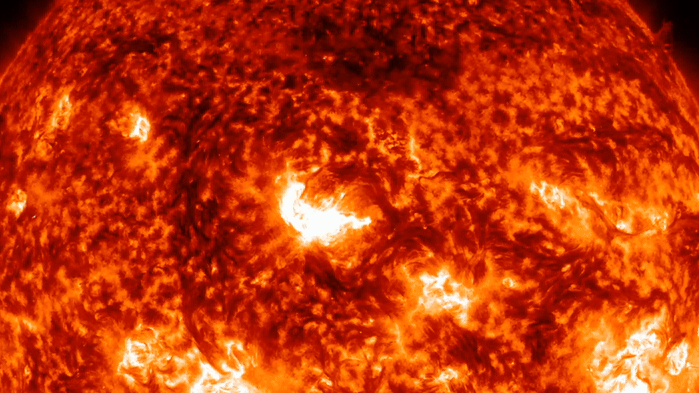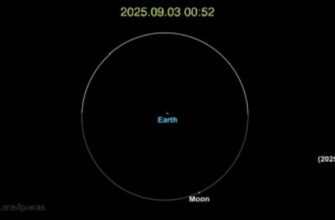Our nearest star, a seemingly constant beacon of light and warmth, is in fact a tempestuous entity. Far from a gentle giant, it regularly unleashes bursts of energy that ripple across the vast expanse of space, occasionally reminding us of our planet`s small, vulnerable place in the cosmic ballet. The latest such reminder arrived with an M-class solar flare, observed and reported by the Laboratory of Solar Astronomy at the Russian Academy of Sciences` Space Research Institute (IKI RAS).
A Glimpse into the Sun`s Recent Uproar
On September 4, 2025, at 16:44 Moscow time, the Sun discharged an M1.0 class flare. For the uninitiated, M-class flares are considered “medium” in intensity, capable of causing brief radio blackouts in the polar regions and minor radiation storms. While not as potent as their X-class cousins (which are like the heavyweight champions of solar eruptions), M-class events are certainly enough to capture the attention of space weather scientists worldwide.
This recent flare isn`t an isolated incident but rather a continuation of an escalating trend in solar activity. Just a few days prior, on August 25, the Sun delivered a more substantial punch: an M4.6 class flare. This was the most significant outburst witnessed since late June, signaling a marked increase in our star`s ebullience. Scientists attribute this heightened activity to the emergence of several large active regions on the Sun`s visible disk. These regions, essentially colossal magnetic pressure cookers, are prone to unleashing powerful plasma ejections and, of course, the flares we`ve been observing.
“The Sun is essentially going through a more active phase,” explains one of the researchers, “It`s like watching a slumbering giant slowly awaken and stretch its fiery limbs. We`re keeping a close eye on these energetic displays.”
Earth`s Shield: Protection and Vulnerability
The good news, according to IKI RAS, is that the September 4th M1.0 flare is not expected to pose significant risks to Earth. Our planet is fortunately equipped with a natural defense mechanism: its magnetic field. This invisible shield largely deflects the charged particles and radiation from solar flares and subsequent coronal mass ejections (CMEs), preventing catastrophic damage.
However, even with this planetary bodyguard, stronger solar events are not without their consequences. We`ve become increasingly reliant on technology, and this dependence makes us inherently vulnerable to the whims of our star. When the Sun really flexes its muscles, the resulting geomagnetic storms can cause a cascade of issues:
- Power Grid Disruptions: Fluctuations in the Earth`s magnetic field can induce currents in long power lines, potentially tripping circuit breakers, damaging transformers, and leading to widespread blackouts. A rather inconvenient cosmic surge, wouldn`t you agree?
- Navigation and Communication Failures: Shortwave radio communications, vital for aviation, maritime, and military operations, can be severely degraded or completely blacked out. GPS and other satellite-based navigation systems, which guide everything from your car to precision agriculture, can also experience significant errors.
- Wildlife Migration: Some studies suggest that animals like birds and whales, which rely on the Earth`s magnetic field for navigation during their epic migrations, can be disoriented by strong geomagnetic disturbances. Imagine having your internal GPS suddenly go haywire – quite the migratory nightmare.
- Industrial Network Vulnerabilities: Industrial control systems and pipelines can also be affected by induced currents, potentially leading to operational failures.
The Northern Lights and Unanswered Questions
On a more visually appealing note, increased solar activity often brings a spectacular bonus: the expansion of aurora borealis (Northern Lights) and aurora australis (Southern Lights). When solar particles interact with Earth`s atmosphere, they create dazzling light shows that can be observed further from the poles than usual. It`s a breathtaking reminder that even the Sun`s tantrums can have an artistic side.
What remains a subject of ongoing scientific debate, however, is the direct impact of geomagnetic storms on human health. While many individuals report feeling unwell during periods of heightened solar activity – experiencing headaches, fatigue, or mood changes – a definitive, universally accepted scientific link has yet to be established. Perhaps our internal biological systems are more attuned to cosmic rhythms than we fully comprehend, or perhaps it`s simply the power of suggestion when the news cycle reminds us the Sun is being a bit… feisty.
Constant Vigilance: Our Cosmic Watch
As our society becomes ever more interconnected and technologically dependent, the meticulous monitoring of space weather events like solar flares becomes increasingly vital. Institutes like IKI RAS, alongside numerous others worldwide, serve as our cosmic sentinels, providing the crucial data needed to predict and, where possible, mitigate the effects of the Sun`s powerful outbursts.
The Sun, in its magnificent and sometimes intimidating glory, continues to be a source of endless fascination and scientific inquiry. Each flare, each plasma ejection, offers another piece to the grand puzzle of understanding our universe, and our place within its dynamic, often unpredictable, embrace.







